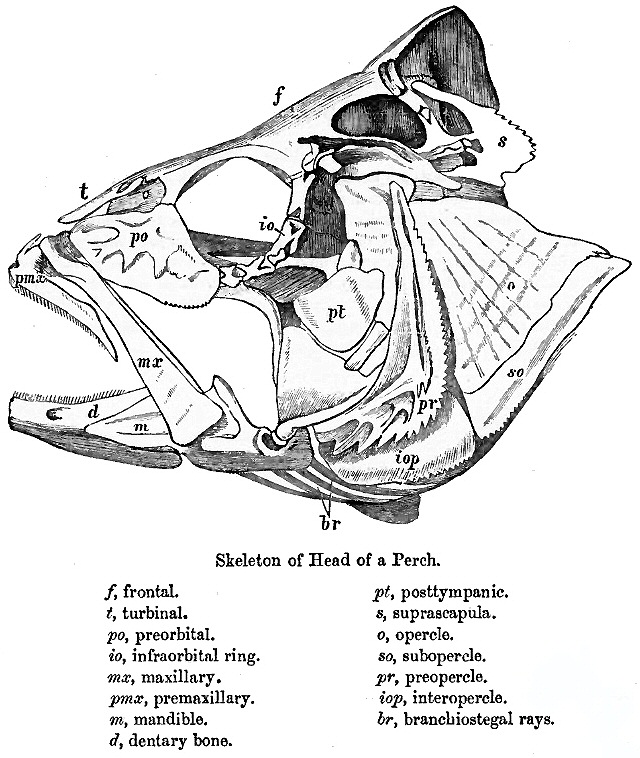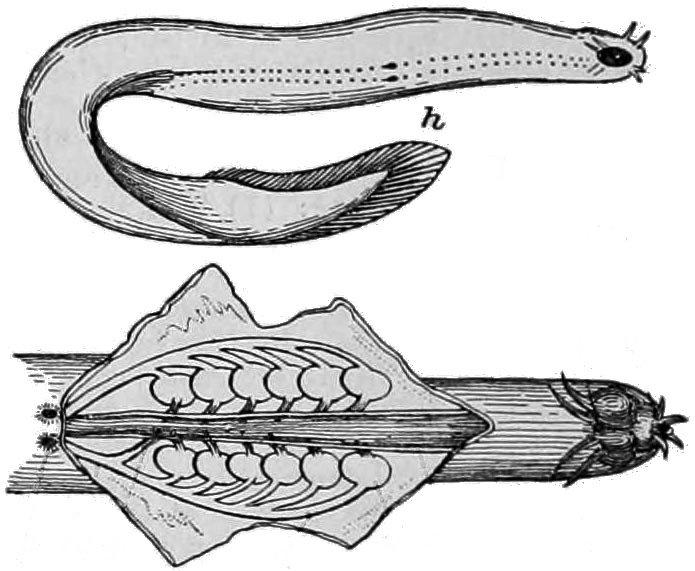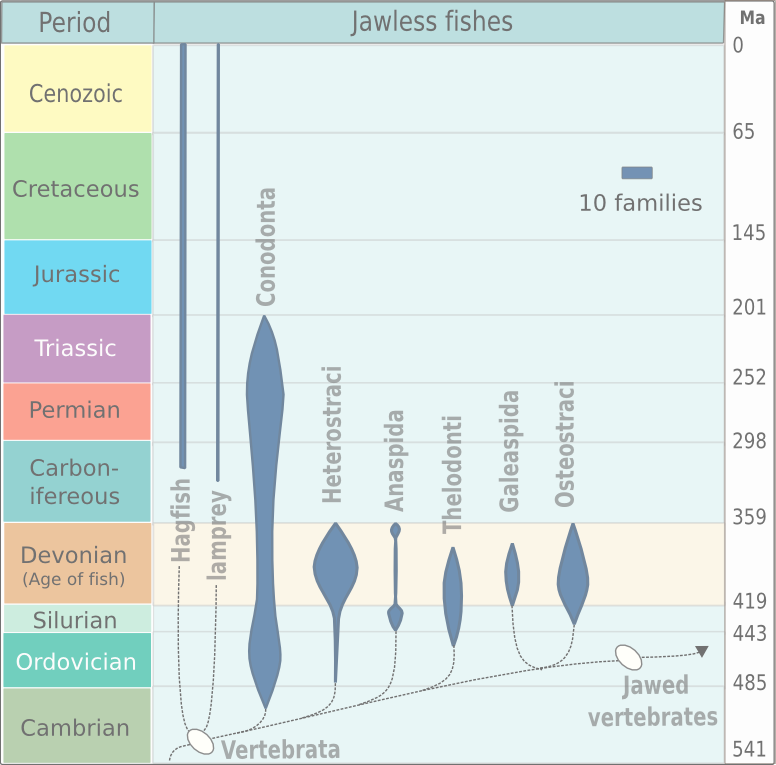|
Chondrocranium
The chondrocranium (or ''cartilaginous neurocranium'') is the primitive cartilaginous skeletal structure of the fetal skull that grows to envelop the rapidly growing embryonic brain.Salentijn, L. ''Biology of Mineralized Tissues: Prenatal Skull Development'', Columbia University College of Dental Medicine post-graduate dental lecture series, 2007 The chondrocranium in different species can vary greatly, but in general it is made up of four components, the sphenoids, occipitals, otic capsules, and nasal capsules. In humans, the chondrocranium begins forming at 28 days from mesenchymal condensations and is fully formed between week 7 and 9 of fetal development. While the majority of the chondrocranium is succeeded by the bony skull, some components do persist into adulthood. In cartilaginous fishes (e.g. sharks and rays) and agnathans (e.g. lampreys and hagfish), the chondrocranium persists throughout life.Kent, G.C & Miller, L. (1997): Comparative Anatomy of the Vertebrate ... [...More Info...] [...Related Items...] OR: [Wikipedia] [Google] [Baidu] |
Neurocranium
In human anatomy, the neurocranium, also known as the braincase, brainpan, brain-pan, or brainbox, is the upper and back part of the skull, which forms a protective case around the brain. In the human skull, the neurocranium includes the calvaria or skullcap. The remainder of the skull is the facial skeleton. In comparative anatomy, neurocranium is sometimes used synonymously with endocranium or chondrocranium. Structure The neurocranium is divided into two portions: * the membranous part, consisting of flat bones, which surround the brain; and * the cartilaginous part, or chondrocranium, which forms bones of the base of the skull. In humans, the neurocranium is usually considered to include the following eight bones: * 1 ethmoid bone * 1 frontal bone * 1 occipital bone * 2 parietal bones * 1 sphenoid bone * 2 temporal bones The ossicles (three on each side) are usually not included as bones of the neurocranium. There may variably also be extra sutural bones present. ... [...More Info...] [...Related Items...] OR: [Wikipedia] [Google] [Baidu] |
Neural Crest
The neural crest is a ridge-like structure that is formed transiently between the epidermal ectoderm and neural plate during vertebrate development. Neural crest cells originate from this structure through the epithelial-mesenchymal transition, and in turn give rise to a diverse cell lineage—including melanocytes, craniofacial cartilage and bone, smooth muscle, dentin, peripheral and enteric neurons, adrenal medulla and glia. After gastrulation, the neural crest is specified at the border of the neural plate and the non-neural ectoderm. During neurulation, the borders of the neural plate, also known as the neural folds, converge at the dorsal midline to form the neural tube. Subsequently, neural crest cells from the roof plate of the neural tube undergo an epithelial to mesenchymal transition, delaminating from the neuroepithelium and migrating through the periphery, where they differentiate into varied cell types. The emergence of the neural crest was important in v ... [...More Info...] [...Related Items...] OR: [Wikipedia] [Google] [Baidu] |
Endocranium
The endocranium in comparative anatomy is a part of the skull base in vertebrates and it represents the basal, inner part of the cranium. The term is also applied to the outer layer of the dura mater in human anatomy. Structure Structurally, the endocranium consists of a boxlike shape, open at the top. The posterior margin exhibits the '' foramen magnum'', an opening for the spinal cord. The floor of the endocranium has several paired openings for the cranial nerves, and the anterior margin holds a spongy construction, allowing for the external nasal nerves to pass through. Romer, A.S. & T.S. Parsons. 1977. ''The Vertebrate Body.'' 5th ed. Saunders, Philadelphia. (6th ed. 1985) All bones of the structure derive from the cranial neural crest during fetal development. Endocranial elements in humans In humans and other mammals, the endocranium forms during fetal development as a cartilaginous neurocranium, that ossifies from several centers. Several of these bones merge, and in ... [...More Info...] [...Related Items...] OR: [Wikipedia] [Google] [Baidu] |
Hagfish
Hagfish, of the Class (biology), class Myxini (also known as Hyperotreti) and Order (biology), order Myxiniformes , are eel-shaped Agnatha, jawless fish (occasionally called slime eels). Hagfish are the only known living Animal, animals that have a skull but no vertebral column, although they do have rudimentary vertebrae. Hagfish are marine animal, marine predators and scavengers that can defend themselves against other larger predators by releasing copious amounts of slime coat, slime from mucous glands in their skin. Although their exact relationship to the only other extant taxon, living group of Agnatha, jawless fish, the lampreys, was long the subject of controversy, genetic evidence suggests that hagfish and lampreys are more closely related to each other than to jawed vertebrates, thus forming the superclass Cyclostomi. The oldest-known stem group hagfish are known from the Pennsylvanian (geology), Late Carboniferous, around Moscovian (Carboniferous), 310 million years ... [...More Info...] [...Related Items...] OR: [Wikipedia] [Google] [Baidu] |
Agnatha
Agnatha (; ) or jawless fish is a paraphyletic infraphylum of animals in the subphylum Vertebrata of the phylum Chordata, characterized by the lack of jaws. The group consists of both extant taxon, living (Cyclostomi, cyclostomes such as hagfishes and lampreys) and Extinction, extinct clades (e.g. conodonts and Cephalaspidomorphi, cephalaspidomorphs, among others). They are sister taxon, sister to vertebrates with jaws known as gnathostomes, who evolution, evolved from jawless ancestors during the early Silurian by developing folding joint, articulations in the first pairs of gill arches. Sequencing, Molecular data, both from rRNA and from mtDNA as well as Embryology, embryological data, strongly supports the hypothesis that both groups of living agnathans, hagfishes and lampreys, are more closely related to each other than to Gnathostomata, jawed fish, forming the Class (biology), superclass Cyclostomi. The oldest fossil agnathans appeared in the Cambrian. Living jawless fish c ... [...More Info...] [...Related Items...] OR: [Wikipedia] [Google] [Baidu] |
Dermal Bone
A dermal bone or investing bone or membrane bone is a bony structure derived from intramembranous ossification forming components of the vertebrate skeleton, including much of the skull, jaws, gill covers, shoulder girdle, fin rays ( lepidotrichia), and the shells of turtles and armadillos. In contrast to endochondral bone, dermal bone does not form from cartilage that then calcifies, and it is often ornamented. Dermal bone is formed within the dermis and grows by accretion only – the outer portion of the bone is deposited by osteoblasts. The function of some dermal bone is conserved throughout vertebrates, although there is variation in shape and in the number of bones in the skull roof and postcranial structures. In bony fish, dermal bone is found in the fin rays and scales. A special example of dermal bone is the clavicle The clavicle, collarbone, or keybone is a slender, S-shaped long bone approximately long that serves as a strut between the scapula, shoulder b ... [...More Info...] [...Related Items...] OR: [Wikipedia] [Google] [Baidu] |
Anatomical Terms Of Location
Standard anatomical terms of location are used to describe unambiguously the anatomy of humans and other animals. The terms, typically derived from Latin or Greek roots, describe something in its standard anatomical position. This position provides a definition of what is at the front ("anterior"), behind ("posterior") and so on. As part of defining and describing terms, the body is described through the use of anatomical planes and axes. The meaning of terms that are used can change depending on whether a vertebrate is a biped or a quadruped, due to the difference in the neuraxis, or if an invertebrate is a non-bilaterian. A non-bilaterian has no anterior or posterior surface for example but can still have a descriptor used such as proximal or distal in relation to a body part that is nearest to, or furthest from its middle. International organisations have determined vocabularies that are often used as standards for subdisciplines of anatomy. For example, '' Termi ... [...More Info...] [...Related Items...] OR: [Wikipedia] [Google] [Baidu] |
Mesoderm
The mesoderm is the middle layer of the three germ layers that develops during gastrulation in the very early development of the embryo of most animals. The outer layer is the ectoderm, and the inner layer is the endoderm.Langman's Medical Embryology, 11th edition. 2010. The mesoderm forms mesenchyme, mesothelium and coelomocytes. Mesothelium lines coeloms. Mesoderm forms the muscles in a process known as myogenesis, septa (cross-wise partitions) and mesenteries (length-wise partitions); and forms part of the gonads (the rest being the gametes). Myogenesis is specifically a function of mesenchyme. The mesoderm differentiates from the rest of the embryo through intercellular signaling, after which the mesoderm is polarized by an organizing center. The position of the organizing center is in turn determined by the regions in which beta-catenin is protected from degradation by GSK-3. Beta-catenin acts as a co-factor that alters the activity of the transcription facto ... [...More Info...] [...Related Items...] OR: [Wikipedia] [Google] [Baidu] |
Notochord
The notochord is an elastic, rod-like structure found in chordates. In vertebrates the notochord is an embryonic structure that disintegrates, as the vertebrae develop, to become the nucleus pulposus in the intervertebral discs of the vertebral column. In non-vertebrate chordates a notochord persists. The notochord is derived from the embryonic mesoderm and consists of an inner core of vacuolated cells filled with glycoproteins, covered by two helical collagen-elastin sheaths. It lies longitudinally along the rostral-caudal (head to tail) axis of the body, dorsal to the gut tube, and ventral to the dorsal nerve cord. Some chordate invertebrates, such as tunicates, develop a notochord during the larval stage but lose it through subsequent stages into adulthood. The notochord is important for signaling the dorso-ventral patterning of cells coming from the mesodermal progenitors. This helps form the precursors needed for certain organs and the embryo to develop ... [...More Info...] [...Related Items...] OR: [Wikipedia] [Google] [Baidu] |
Embryology
Embryology (from Ancient Greek, Greek ἔμβρυον, ''embryon'', "the unborn, embryo"; and -λογία, ''-logy, -logia'') is the branch of animal biology that studies the Prenatal development (biology), prenatal development of gametes (sex cells), fertilization, and development of embryos and fetuses. Additionally, embryology encompasses the study of congenital disorders that occur before birth, known as teratology. Early embryology was proposed by Marcello Malpighi, and known as preformationism, the theory that organisms develop from pre-existing miniature versions of themselves. Aristotle proposed the theory that is now accepted, Epigenesis (biology), epigenesis. Epigenesis (biology), Epigenesis is the idea that organisms develop from seed or egg in a sequence of steps. Modern embryology developed from the work of Karl Ernst von Baer, though accurate observations had been made in Italy by anatomists such as Aldrovandi and Leonardo da Vinci in the Renaissance. Comparative ... [...More Info...] [...Related Items...] OR: [Wikipedia] [Google] [Baidu] |
Lamprey
Lampreys (sometimes inaccurately called lamprey eels) are a group of Agnatha, jawless fish comprising the order (biology), order Petromyzontiformes , sole order in the Class (biology), class Petromyzontida. The adult lamprey is characterized by a toothed, funnel-like sucking mouth. The common name "lamprey" is probably derived from Latin , which may mean "stone licker" ( "to lick" + "stone"), though the etymology is uncertain. "Lamprey" is sometimes seen for the plural form. About 38 extant species of lampreys are known, with around seven known extinct species. They are classified in three families—two small families in the Southern Hemisphere (Geotriidae, Mordaciidae) and one large family in the Northern Hemisphere (Petromyzontidae). Genetic evidence suggests that lampreys are more closely related to hagfish, the only other living group of jawless fish, than they are to jawed vertebrates, forming the superclass Cyclostomi. The oldest fossils of stem-group lampreys are ... [...More Info...] [...Related Items...] OR: [Wikipedia] [Google] [Baidu] |
Batoidea
Batomorphi is a Division (taxonomy), division of Chondrichthyes, cartilaginous fishes, commonly known as rays, this taxon is also known as the Order (biology), superorder Batoidea, but the 5th edition of ''Fishes of the World'' classifies it as the division Batomorphi. They and their close relatives, the sharks, compose the subclass Elasmobranchii. Rays are the largest group of cartilaginous fishes, with well over 600 species in 26 families. Rays are distinguished by their flattened bodies, enlarged pectoral fins that are fused to the head, and gill slits that are placed on their ventral surfaces. Anatomy Batomorphs are flat-bodied, and, like sharks, are cartilaginous fish, meaning they have a boneless skeleton made of a tough, elastic cartilage. Most batomorphs have five ventral slot-like body openings called gill slits that lead from the gills, but the Hexatrygonidae have six. Batomorph gill slits lie under the pectoral fins on the underside, whereas a shark's are on the sides ... [...More Info...] [...Related Items...] OR: [Wikipedia] [Google] [Baidu] |







